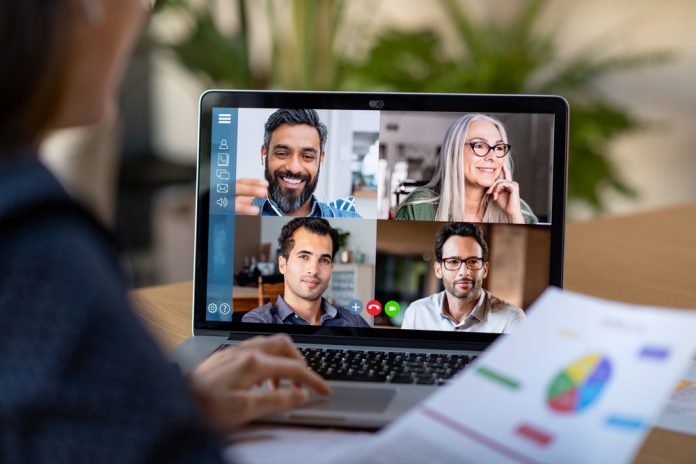
The unprecedented impact of the pandemic has forced us to pivot and completely rethink how we live and work far beyond what we could have imagined just a few years ago. As social distancing became part of our daily lives seemingly overnight, organizations in every industry were compelled to rapidly transform how they operate while working aggressively to meet the evolving needs of a remote workforce.
Coming out of this transformational shift, business and training leaders have recognized the limitations of traditional learning methods. They’ve challenged themselves to quickly adapt by reconsidering their strategies, accelerating the adoption of advanced mobile and virtual technologies, and designing creatively agile solutions years ahead of what many organizations were planning to implement.
Forward-thinking organizations have been inspired to explore and realize the intrinsic value of embracing innovative learning solutions to help them navigate the new realities of our changing social and business landscapes.
Acknowledging that People Are Learning Everywhere
While the pandemic’s impact continues to be an extraordinary impetus for change, the reality is that it only accelerated an overwhelming trend that began decades before, as evolving technologies and social norms dramatically transformed how people access, consume and share knowledge.
This pervasive and limitless accessibility of information has created a new paradigm where “learning is now happening everywhere.” As a result, training expectations for people of all ages and backgrounds have changed forever.

In reaction to changing workforce expectations, organizations are placing a growing emphasis on:
- Improving professional development to entice and retain qualified people.
- Reducing time to proficiency and even mastery in critical roles.
- Identifying high performers and advancing potential leaders faster.
- Bridging growing generational differences.
- Expanding delivery methods to align business needs with training preferences.
Within our current economic climate, there are tremendous opportunities for business and training leaders to embrace the tools and methods of learning available to them. Employees are already using many technologies to connect, communicate, and exchange information and every touchpoint is a valuable opportunity to engage, educate, and sustainably support their development.
The “Learn Anywhere” model strategically aligns critical business objectives with a broad spectrum of diverse training modalities. Blending these solutions in a targeted way enables organizations to provide each employee with the relevant, engaging, and measurable learning experiences they require When, Where, and How They Need It to perform their roles and responsibilities successfully.
The diagram below is a high-level visualization of the audience-centric “Learn Anywhere” model described:

Augmenting live, virtual, and web-based training events with agile micro-learning and immersive experiential interactions enables companies to engage their employees fully and accurately measure competency and performance at a level of detail and sustainability never thought possible.
The Spectrum of Innovative Learning Experiences
Below are a few examples of the innovative role-based learning experiences organizations are integrating to effectively educate, reinforce, and support their workforces when and where they need it most. These delivery methods are easily accessible from many devices and provide detailed data tracking, analysis, and evaluation opportunities.
- Interactive virtual classroom workshops
- Enhanced decision-treeing eLearning
- Live, animated, and interactive 360 video
- Moment-of-need mobile micro-learning
- Experiential web-based 3D gaming scenarios
- Immersive virtual reality simulations
- Just-in-time augmented reality interventions
The Value of Continued Investment in Learning Innovation
For organizations that recognize the importance of attracting, developing, and retaining talented employees, the value of implementing agile, sustainable, and measurable training strategies is evident.
- Increased Accessibility in Our New Reality:
According to a recent Bersin by Deloitte study, “Meet the Modern Learner,” people unlock their smartphones up to 9-times every hour.
The diversity of technologies people now habitually use to access, consume, and share knowledge empowers organizations to utilize a broad spectrum of advanced digital learning tools. And the value of these technologies is that they deliver relevant information in right-sized and engaging formats when, where, and how employees need it to perform at their best.
- Improved Knowledge Retention, Application, and Adoption:
The “Ebbinghaus Forgetting Curve” study from the late 1800s, and substantiated in a 2015 study, revealed that students forget 56 percent of lecture-based learning content within one hour and up to 80 percent within 30 days.
Multiple studies have also shown that allowing people to practice what they have learned using relevant scenario simulations repeatedly increases knowledge retention and application by more than 35 percent and reduces time to proficiency by 50 percent.
Scenario-based web, mobile, virtual, and augmented reality training solutions offer learners significantly more opportunities to repeatedly and safely practice even the most complex concepts and tasks they are likely to encounter in the real world. These simulated experiences are particularly valuable within high-risk environments that are often too limited, dangerous, or cost-prohibitive to allow access to live training.
- Better Measurement through Multi-Sourced Data Tracking:
According to a recent Rallyware article, “Why Companies Are Massively Integrating Performance Data and Training,” 50 percent of companies measure the effect of training on employee engagement and productivity, and only 34 percent of those align performance management and learning to devise better training programs.
Utilizing an integrated blend of digital learning solutions introduces valuable opportunities for dynamically accessing and gathering highly detailed data from multiple sources. That enables organizations to objectively measure and evaluate each person’s level of knowledge comprehension, retention, and application as they advance through each critical phase on their path to proficiency and proactively adjust to meet individual needs.

Seizing this Moment of Opportunity
Partly out of necessity, we find ourselves at a critical moment where organizations must acknowledge that how people learn has evolved, and expectations around training have changed. As business and training leaders, we have the opportunity, means, motivation, and perhaps the obligation to embrace innovation and think differently about the accessibility, relevance, and measurability of the learning experiences we design and deliver. I encourage you to seize the moment!




